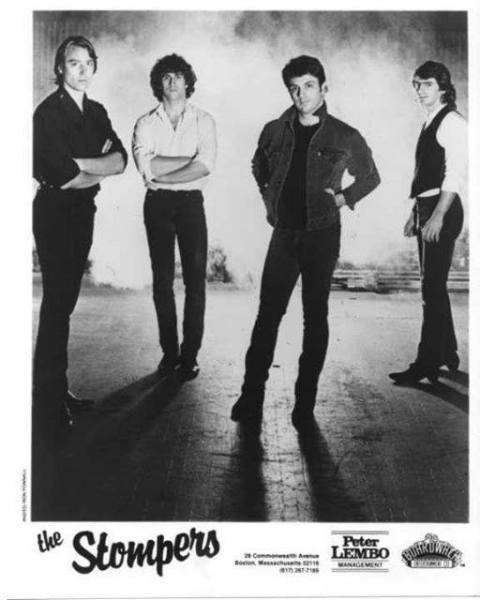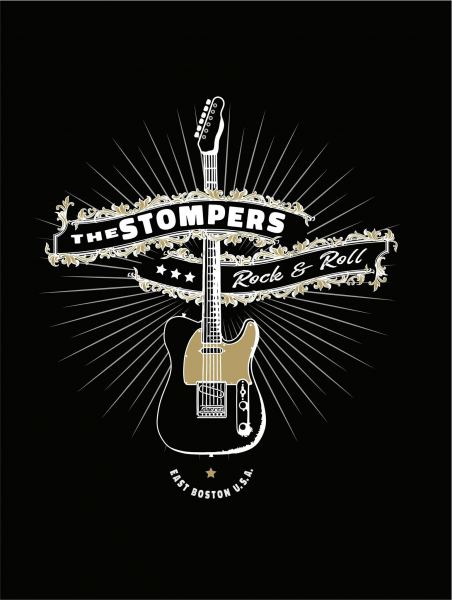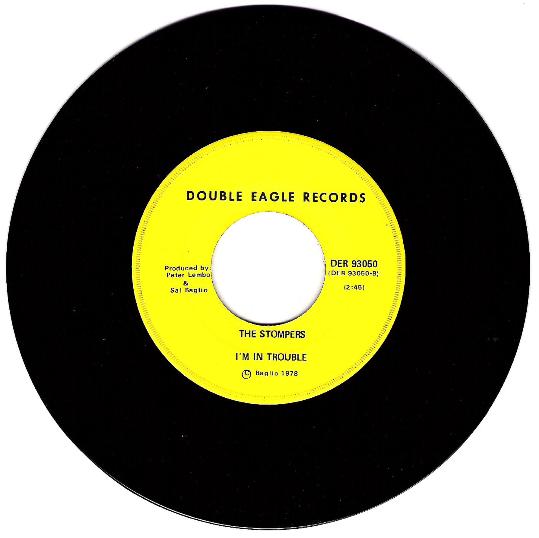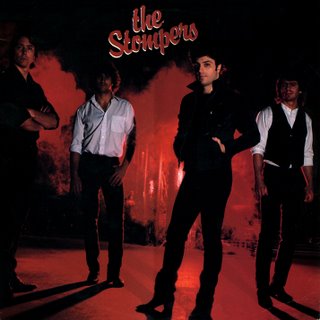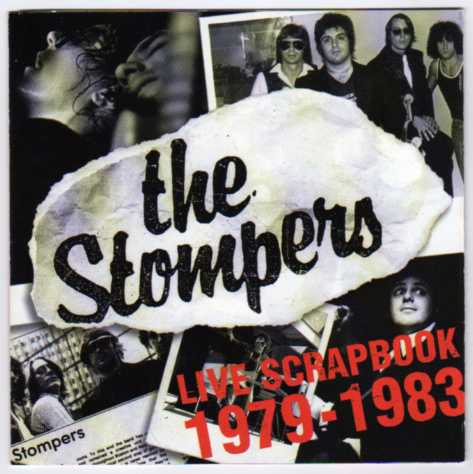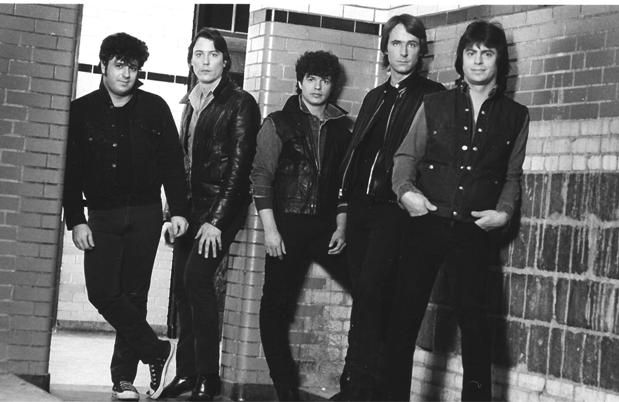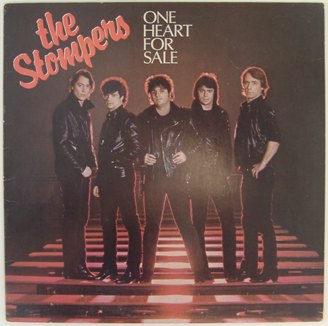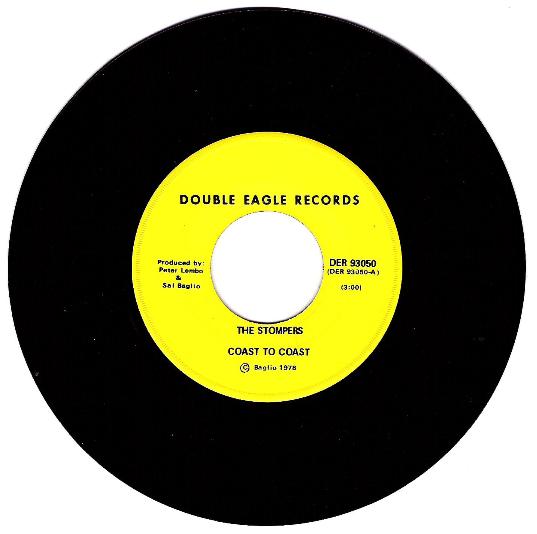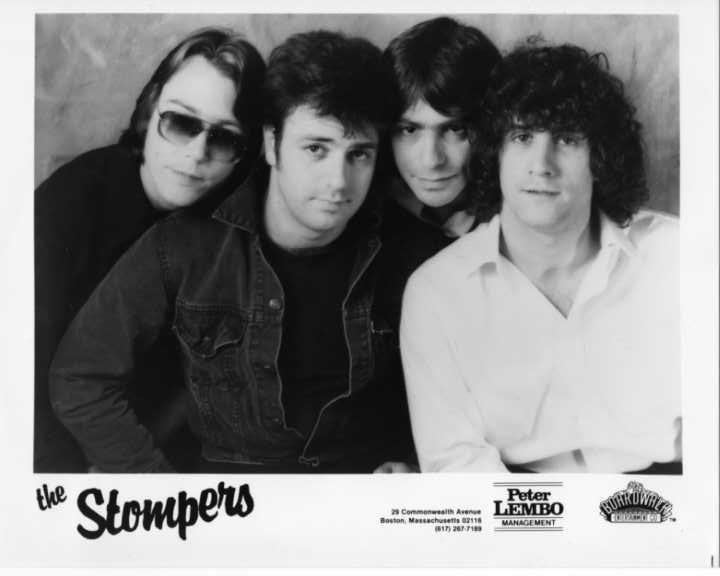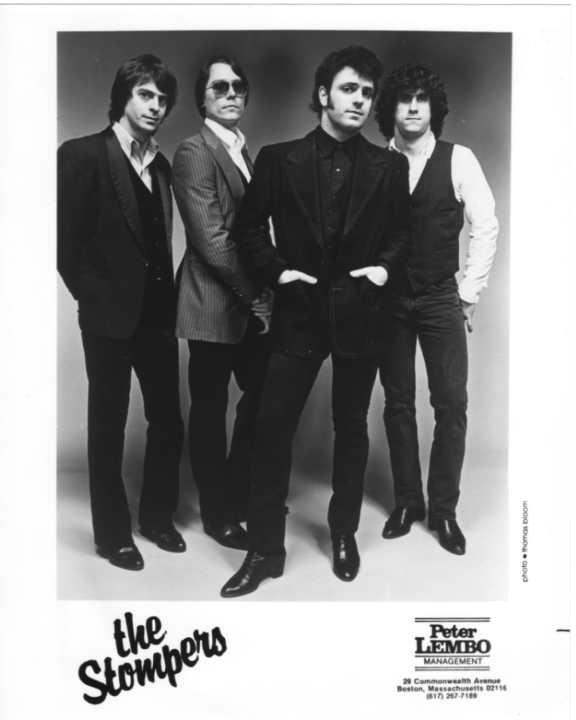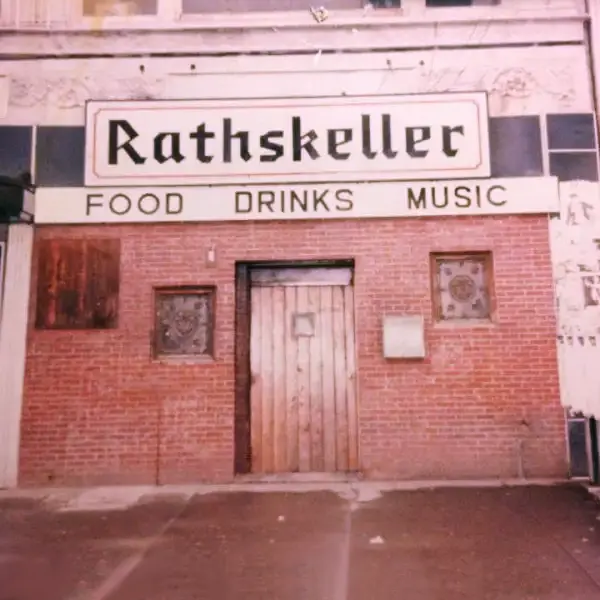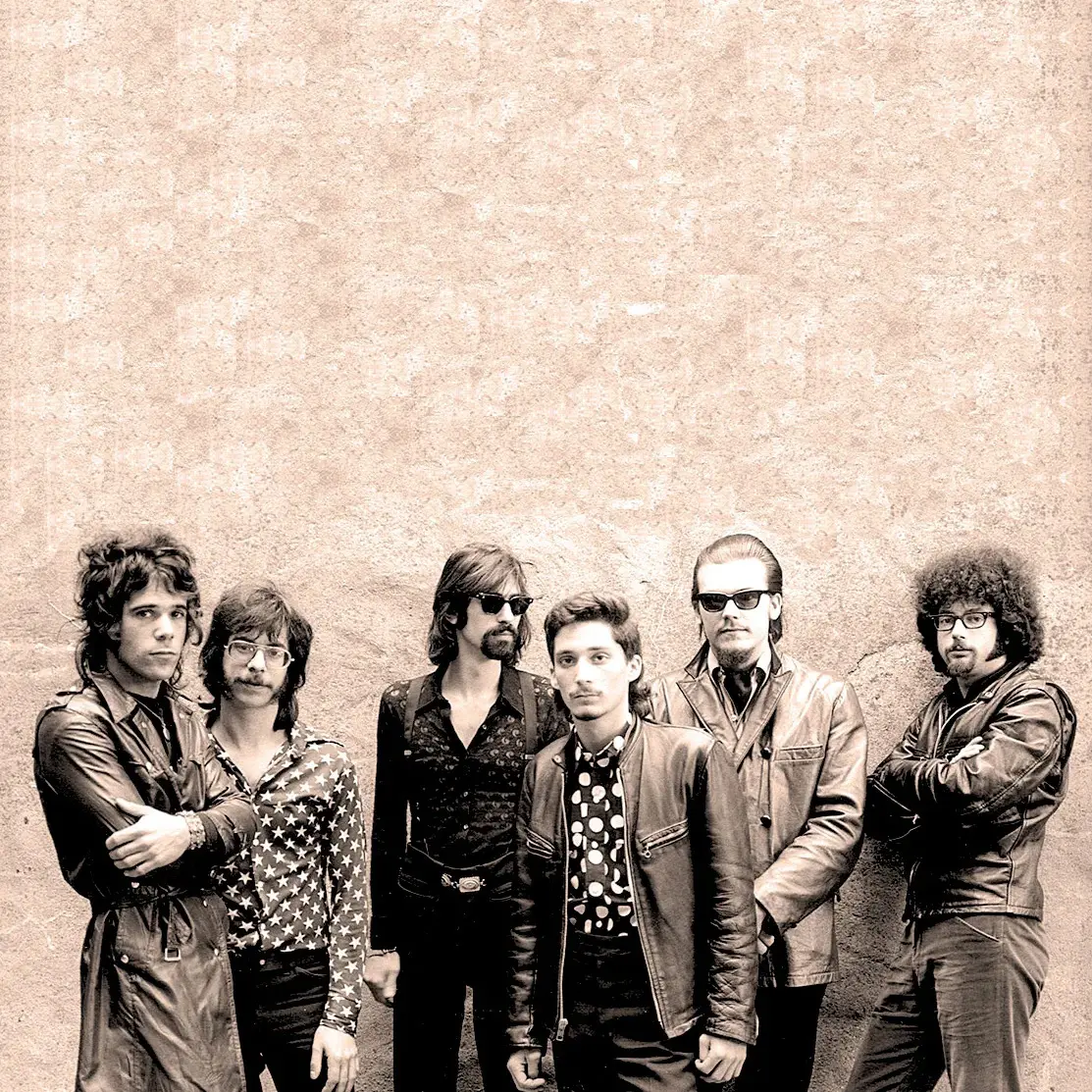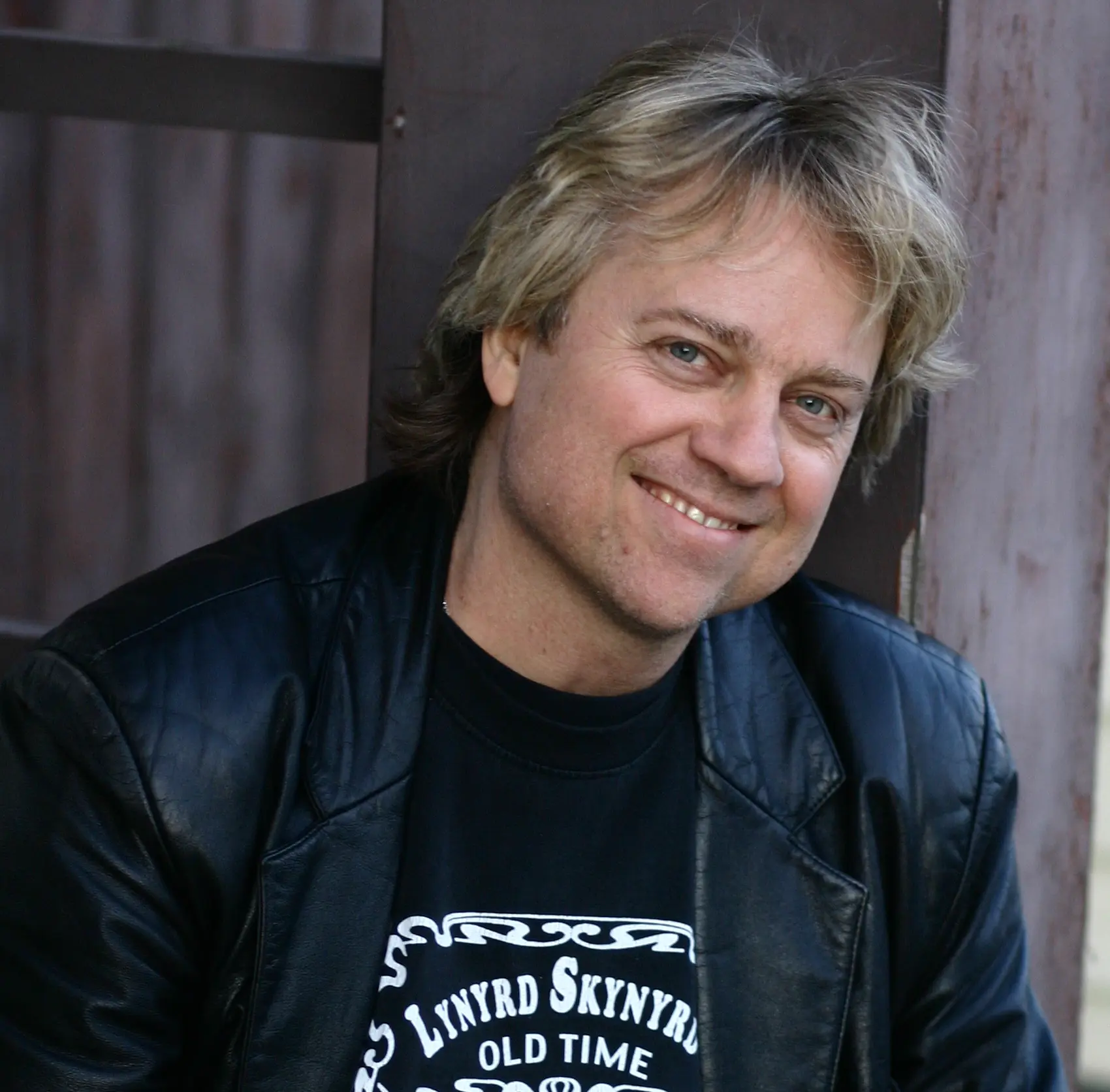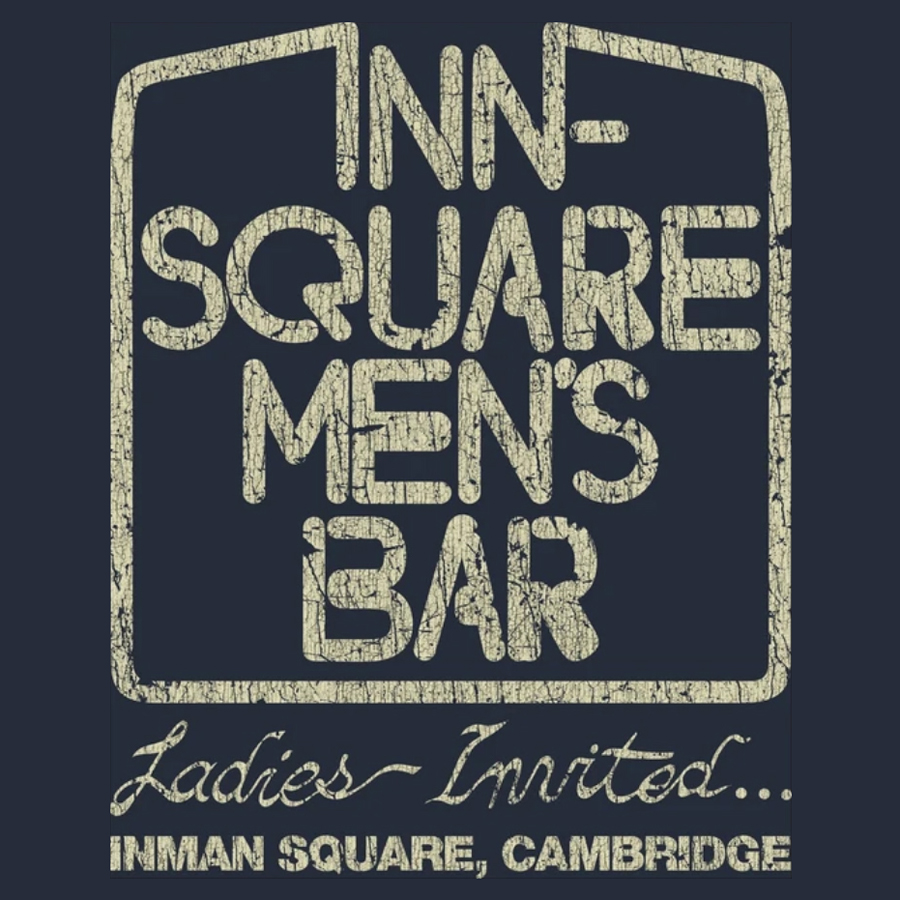The Stompers
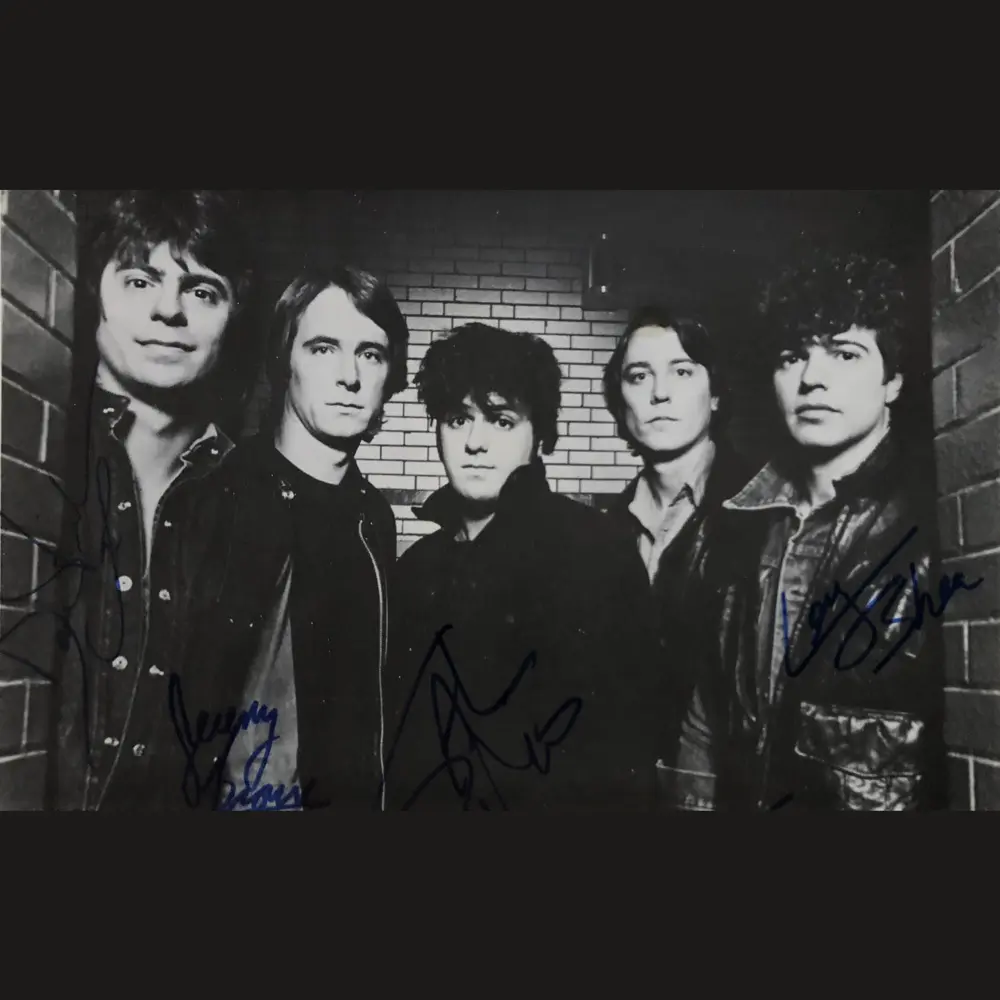
The Stompers
The Stompers’ story begins in the fall of 1977, when friends Sal Baglio and Mark Cuccinello decided to start a band. Stephen Gilligan and Dave Friedman, the only people to respond to an index card posted on a music store bulletin board seeking musicians, arrived a short time later. On November 7, 1977, the musical neophytes played their first gig, in Beverly, Massachusetts.
The band started out at spots like Cantone’s, Inn-Square Men’s Bar (ladies invited), Jonathan Swift’s and The Rathskeller, where each gig was a rock ‘n’ roll slugfest. It didn’t matter where the band performed. Show after show, the faith of devoted followers mushroomed and the number of converted non-believers grew. The early Stompers all-out, work-horse performances became legendary but – more importantly – the purity of their music was what really stood out. It was believable, with feeling and conviction. Word of mouth quickly spread as The Stompers’ reputation as high-energy, no-frills, infectious rockers soared.
“COAST TO COAST,” RETURN OF THE SECAUCUS SEVEN, SUDDEN POPULARITY
In early 1978, a rapid national breakout for the Boston-based act seemed virtually assured. Their naive excitement and their fresh interpretations of rock’s fundamental roots became contagious. On one scorching summer day, the boys dragged all their equipment up to the second floor of an apartment building converted to a recording studio.
The primitive space had no air conditioning and mattresses were tacked up on the walls for sound proofing. From this sweaty initial session, they recorded the show-stopping single “Coast to Coast” (b/w “I’m in Trouble”) and pressed it as on vinyl. The band received instant gratification when film-meister John Sayles included the track in his classic film, Return of the Secaucus Seven.
“Coast to Coast” launched a long string of unprecedented FM-radio support for The Stompers in New England and listeners far outside the region were soon aware of their mission. Over a two-year period, an even dozen of their songs, including “American Fun,” “Summer Girls” and the ballad “Anymore,” were released and feverishly played and re-played on FM stations in 14 states. A Boston television station latched on to the momentum, producing a two-hour concert special. It was incredible exposure considering that the subject of all the attention was an independent band, not signed to any kind of record deal. Despite this seeming handicap, virtually all of their shows became standing room only.
TOURING WITH THE J. GEILS BAND, THE BEACH BOYS
For the next three years, The Stompers’ epic rise continued and their diehard fans followed them everywhere. They played pretty much every college, roadhouse, nightspot and small-to-mid-sized hall in New England, consistently packing them in. The still-unsigned group was also invited to share arena stages with many national rockers.
A tour with the mighty J. Geils Band in the winter of 1980 certainly helped increase the bands popularity, since they played in front of about 20,000 people every night, something for which The Stompers have always remained grateful. Touring with The Beach Boys was also a most significant co-billing, as Brian Wilson had been one of Baglio’s life-long influences.
ROCK TO RICHES TALENT SEARCH, BOARDWALK SIGNING
In 1981, The Stompers earned the right to compete in the Rock to Riches talent search at the Palladium in New York City in April 1982. After winning the competition, Atlantic Records offered the band a deal for a single. However, Boardwalk Records also had reps in the house that night and offered a deal for a full album, which the band signed on to record. The mega-successful label wanted another platinum record and they heard it in The Stompers. Boardwalk was quarterbacked by industry hit-maker and promotional genius Neal Bogart (founder of Casablanca Records in the early ‘70s) and he signed the band on the strength of their live shows.
The effort was duly recorded and in the week of national release, the single “Never Tell An Angel” hit #86 “with a bullet in the Billboard Hot 100. History virtually assured three weeks of upward mobility for any song so designated and the band’s success seemed guaranteed. But not so quick, Stompers fans! Bogart died on May 8, 1982 at the age of 39, Boardwalk immediately filed for Chapter 11 bankruptcy protection from creditors and The Stompers debut album got lost in the bankruptcy proceedings.
LINEUP EXPANSION, POLYGRAM ACQUISITION, ONE HEART FOR SALE
All this lead to 1983 being both one of the roughest and most liberating years for the band. Cooch, a huge backbone to the band’s success, left the group in July and, when Sal recruited his East Boston High School buddy Lenny Shea to replace him, Gilligan recommended an old friend of his, Jeremy Brown, to play piano. Suddenly, The Stompers were a five-piece act with a fuller, “wall-of-sound” rhythm section. The concerts were still blistering without ever being insincere or phony and word of their on-stage firepower continued to spread like a wild virus.
PolyGram Records acquired The Stompers’ deal from Boardwalk in bankruptcy court. The label had big plans for the album, which was retitled One Heart For Sale and included a single by the same name. Again, the release kicked-out white hot with great potential. The new/old album was “bubbling under” at #110, followed by the single “One Heart For Sale.” But, exactly – almost eerily – the timing was tainted with bad luck, just like the Boardwalk fiasco. The same week as the release, PolyGram, in a typical industry purge, fired their entire promotional staff and plans to support the album were scuppered.
“EAST SIDE GIRL” VIDEO, UNFINISHED BUSINESS, GREATEST HITS…LIVE
In 1985, the band’s first conceptual music video, “East Side Girl,” was produced and released without major label support. Still, The Stompers popularity built new momentum, the five-some was expanding to newer territories with great enthusiastic response and the video was in heavy rotation on many of New England’s TV video channels for over two months.
In 1990, Fast Track Records released the aptly titled Unfinished Business, a collection of songs recorded five years earlier that never saw the light of day. For the next few years, The Stompers continued to play to enthusiastic crowds, including their first appearance on Boston’s City Hall Plaza. In the spring of 1994, Greatest Hits…Live was released. To celebrate, the band played a series of summer shows, highlighted by a return engagement on City Hall Plaza in front of 20,000 people. Following these shows, 17 years of playing together had seemingly come to an end.
RECORD ALBUM, CURRENT ACTIVITY
But the end was not to be. In the summer of 2000, six years after Greatest Hits…Live dropped, The Stompers self-released Record Album, a 21-song compilation covering the years 1978 to 1986. They played sell-out shows all summer long, giving their fans more of that high-energy rock and roll they had been missing.
These days, though The Stompers have not recorded since 1986, the band continues to sell out shows filled with a multi-generation assortment of fans. Founder Sal Baglio has released several solo records including Loudah by his new band, The Amplifier Heads, released in November 2019. Bagio also is a longtime member of three-time Grammy Award winner Tom Hambridge’s touring band, The Rattlesnakes.
(by David “Max” Segal, Mickey O’Halloran [RIP], Jay Lanney and Dave Doherty)

